Horseback riders from all disciplines experience knee pain. In fact, knee pain in horseback riders is quite common. Recently, I’ve been nurturing my left knee so I can get back up in the saddle. I’ve learned a few things from fellow equestrian that are worth passing on.
Here’s My Riding-Induced Knee Pain Story
I had ridden Carrera before working my pony and my knee was just starting to “speak” to me with a dull awareness. Since my pony, Whisper, is turning three I’m prepping her for riding. She is learning to stand by the mounting block as I get up on it. So, as my foot hit the mounting block my knee gave out with a bit of pain. I winced as I caught myself by leaning on my pony. She patiently stood still. The pain went away as quickly as it came and I was able to drape myself across my pony’s back as a step towards actually sitting on her someday.
Undaunted, I continued on as planned that day by ground driving Whisper in the arena. Yet, an awareness of my knee plagued me for the rest of the day. This incident did not catch me totally unaware, as my knee has been threatening to go out. This threat was becoming more obvious while taking steps up stairs. It is mostly fine when I walk, but using it to propel myself up a stair makes it painful and weak.
Equestrians Experience Knee Pain
I discovered that I’m not alone with my knee pain. Knee pain in horseback riders is a common occurrence. One dear friend had surgery to alleviate her pain and another personal connection chose to go through Physical Therapy. In addition, several readers told me their stories. There are a few things all these healing stories have in common:
- Reduce inflammation while support and strengthening are key.
- Healing happens faster when inflammation is gone.
- Joints are more stable when the surrounding muscles are strong.
- We all need healthy knees to stay in the saddle.
Hey, I gotta share this with you . . . Head’s up. Purchasing products through clicking the the links or product pics that follow may result in providing us a little kick-back money. To learn more see the affiliate disclaimer near the end of this story.
Six Tips and Suggestions for Easing Knee Pain in Horseback Riders
Disclaimer: The following are tips and suggestions. I am not a doctor nor did I consult a doctor for my particular situation. However, one should always seek input from medical professionals if you truly want to know what you are dealing with and have their assistance in making a plan. Consult a doctor for input on the effectiveness of these tips and exercises and if you should do them.
Tip #1 Increase Strength and Flexibility Out of the Saddle
Stretching before you ride can lead to greater balance and flexibility and can prevent time-consuming injuries. The focus should be on the hips, hamstrings, IT band and inner thighs. You can find stretching exercises in Yoga for Equestrians.
Strengthening the muscles around the knee helps keep the joint stable. Also strengthening your core keeps you balanced in the saddle. Being fit enough to ride helps prevent injury. You can find a variety of core strengthening exercises in Equestrian Core Workout. To increase leg strength out of the saddle see Equestrian Leg Workout.
Need an easy stretching and strengthening info sheet accessible on your device? Downloading this exercise sheet I created will put the info at your fingertips. The info sheet details two stretching exercises you can do before getting in the saddle and four strengthening exercises to do out of the saddle.
Sometimes employing the guidance of a personal trainer can get you back in the saddle and keep you there.
Tip #2 Ease Inflammation
Got joint pain? There is probably inflammation in that joint. Getting the inflammation reduced can speed healing. One of the best sources for this is ice. An ice pack made specifically for knee joints can make this super easy. If looking to place an icepack directly on skin, place a material barrier between your skin and the ice pack. Plan on icing the knee for no longer than 15-20 mins at a time. Another effective time frame is 10 minutes iced, 10 minutes off and then 10 mins iced again. The sooner you apply ice after experiencing pain the better. In addition to ice the knee needs rest, compression, and elevation.
Diet Impacts Inflammation
Diet also plays a role in inflammation. I asked Cindy Eller, a SLO Horse News reader and Certified Health Coach for her top tip. Cindy helps riders lose weight and reduce inflammation which can contribute to the knee pain keeping riders out of the saddle.
Here is Cindy’s response: “I would have to say my tip would be to keep your joints healthy, so you reduce your chance of injury in the first place. How?
#1 reduce or eliminate inflammatory foods: especially, sugar and bad oils (corn, soy, canola, safflower, sunflower, cottonseed, sunflower, rice bran & grapeseed)
#2 increase anti-inflammatory foods: turmeric, omega-3 foods (sardines, flaxseeds, salmon, walnuts & chia seeds) and my personal favorite, homemade bone broth from high quality animal protein (100% grass-fed and/or pasture-raised) Not only is bone broth anti-inflammatory, it also contains collagen, a rockstar for maintaining optimum joint health. If you don’t have time to make your own, I love the bone broth by Bonafide Provisions ( I buy mine at Sprouts).”
Tip #3 Apply Support to Ease Knee Pain
Your knees are designed to move in one direction – front to back. However, riding a horse compresses this straight hinge structure against the round surface of the horse’s barrel. Thus, creating a side-to-side stress on the knee joint. The knees are not designed to endure this.
Consequently, over a period of time, this pressure can cause the medial collateral ligament to tighten and the lateral ligament to weaken and stretch. This can often result in compression of the medial meniscus which causes inflammation in the joint and degradation of the cartilage. All this can eventually lead to osteoarthritis. The use of a brace can help to keep the joint straight.
Now the problem many knee braces pose is the cumbersome use over breeches or jeans. On top of that many have brace buckles that can cause damage to your saddle. Thus, for riding, you want a knee brace that is buckle free and doesn’t bunch up over clothing. Professional’s Choice Miracle Knee Support checks both those boxes and is made in the USA. They also make support gear for horses.
Another support option worn under clothing is KT tape. Kinesiology Tape is an elastic sport tape that is designed to relieve pain while supporting tendons, muscles and ligaments. It must be applied correctly so the benefits can be experienced. A Physical Therapist will know how to do this best. However, KT tape puts out videos to demonstrate proper application for a variety of uses. Here’s the video for using KT tape for knee support. The cool thing about KT tape is that it is applied directly to to skin so no bulging brace is seen.
Author’s Note: Update two years later – I’ve been using the Professional’s Choice knee brace when I ride. I also sometimes ride with KT tape and the knee brace then keep the KT tape on between rides. I use KT tape and no brace when riding in a horse show. To strengthen and improve the knee I am doing stretching and strengthening exercises out of the saddle, plus getting chiropractic care. My knee has improved and strengthened. I plan to keep this working routine to stay fit and strong for riding. I also use a mounting block when getting into the saddle and I am looking into new stirrup irons.
Tip #4 Check Your Stirrups
Riding with too short or too long of stirrups or uneven stirrups can contribute to knee pain. Before mounting up check to see that your stirrups are the same length on both sides. You can’t always rely on the number of holes in the leathers as leathers stretch. Stand in front of the horse with the stirrups dangling at your horse’s sides. Gauge the evenness the stirrup length by looking at both of them from the front. Be sure the horse is standing on level ground.
Next, start with a stirrup length that is good for you, check to see where the stirrup hits your leg when you take your feet out of the stirrups. Generally, the bottom of the stirrup should be in line with your ankle bone. Stirrups will be shorter for jumping and lots of cantering or galloping.
Another rough estimate is using your arm length. Place your fingers tips on the top buckle of your stirrup leathers and run the stirrups down them to the back of your armpits. This is an effective first guess at stirrup length. Again check the visual level of each stirrup by standing in front of the horse and evaluating the stirrup level as they rest against the horse’s sides.
Stirrups with a wider footbed will put less strain on your knees, as well as stirrups with shock-absorbing properties. There are stirrups designed specifically for lightening the load on the knees. Check out these options:
Compositi Reflex 3D Swivel Wide Track Stirrup Irons. Featuring an ergonomically shaped swivel footbed, these unique irons provide tension relief for your knees and reduce stress through the lower leg and ankle.
Cashel Plain Slanted Western Stirrups. Add extra rider comfort to your tack with these stirrups! Made of heavy gauge aluminum with a smooth finish; these stirrups provide a classic look. The slanted design aids in relieving pressure off your knees and ankles, keeping you comfortable and avoiding strain.
MDC Stainless Ultimate Stirrup Irons. Patented positioning technology and shock-absorbing flexible sides delivers improved stirrup and leg position that relieves pressure on the rider’s ankles, knees, hips and back. In addition, the patented adjustable top provides preset positions for a traditional angle as well as 45º or 90° open angles that greatly improve the rider’s ability to regain a lost stirrup. These open angles also prevent the stirrup from turning back toward the horse’s side, reducing the risk of getting a foot caught up in the stirrup in the event of a fall.
Tip #5 Use a Mounting Block
It’s no surprise that a rider’s left knee might develop issues earlier as it is used to hoist the rider up into the saddle when mounting from the ground. To help alleviate the strain of climbing into the saddle develop a proper mounting technique. Whenever possible use a mounting block. As you hoist yourself up into the saddle, aim to get your stomach over the saddle to take the weight off your left knee. Gently slide your right leg around and softly place yourself in the saddle.
To dismount, take both feet out of the stirrups, again with your weight mostly over the saddle swing your right leg over the back of the horse and gently touch down with one or both feet on the mounting block.
Take along a portable mounting block in your horse trailer for easy mounting when out and about.
Tip #6 Deal with Your Tension
Rider tension is one of the primary reasons why joints get sore. Tension is caused by both physical and psychological elements. The mental attitude of the rider is equally as important as his or her overall physical fitness. A fearful rider can cause a cascade of triggering events. A rider bringing a negative mental/emotional response to a riding session creates a sense of doubt and lack of trust. This leads to the rigid, tense and stiff body.
The horse can sense this and often reacts negatively. This combo impairs the skills needed for effective riding and communicating with the horse. In addition, the tension generated from the fear can cause the riders joints to get stiff and rigid and lead to pain. Horse riders need to learn to be in the moment with their mount by not focusing on the worries of the world. As a rider, focus on keeping your thoughts on the job at hand. Cast off worrisome thoughts so they don’t get in the way of a good ride. Remember to breathe. Breathing releases tension in a positive way as opposed to transmitting it back to your horse and your joints. Here’s a toolbox of ideas for overcoming fear. Horses are a wonderful tool for teaching people how to relax and be in the moment.
Implementing these ideas can help reduce knee pain in horseback riders. They can help keep you in the saddle and heal you up when knee pain might be keeping you out of the saddle. Remember to seek the advice of medical professionals to truly understand what you are dealing with and for getting their help in developing a recovery plan specifically suited for your situation.
Just so you know, clicking the above links takes you to the product on the Amazon site. This makes shopping easy and convenient for you. We do get a little kick-back from items purchased, giving us resources to bring you more stories, but your price stays the same. It’s a win-win!
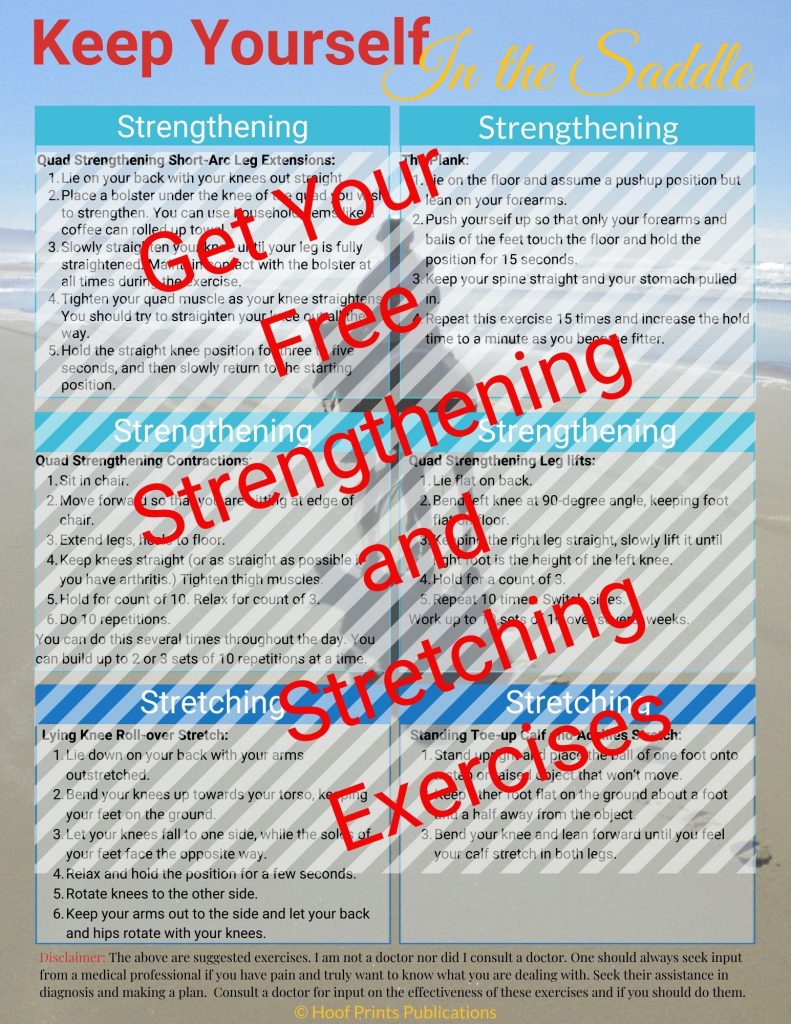
Looking for strengthening and stretching exercises that can help you keep yourself in the saddle? Get this downloadable exercise sheet to have the info right at your fingertips. You can bring it up on your phone to use as a guide. Also, you can print it out after downloading it to your computer. We’ll continue to add horsing around stories to our website so getting this exercise sheet gets you into the SLO Horse News herd keeping you up-to-date with herd happenings. Already a member? No problem, you can get this checklist too, and your info will not be duplicated. Get your Strengthening and Stretching Exercises Sheet here >

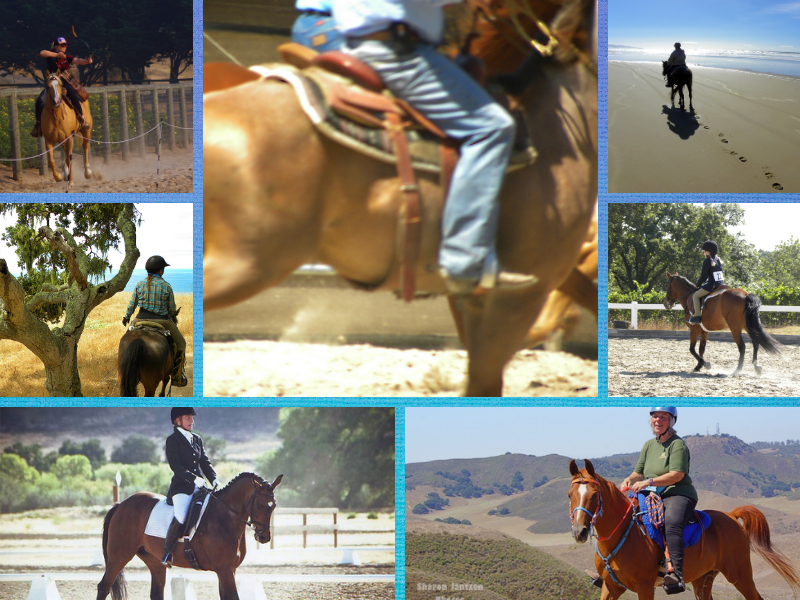
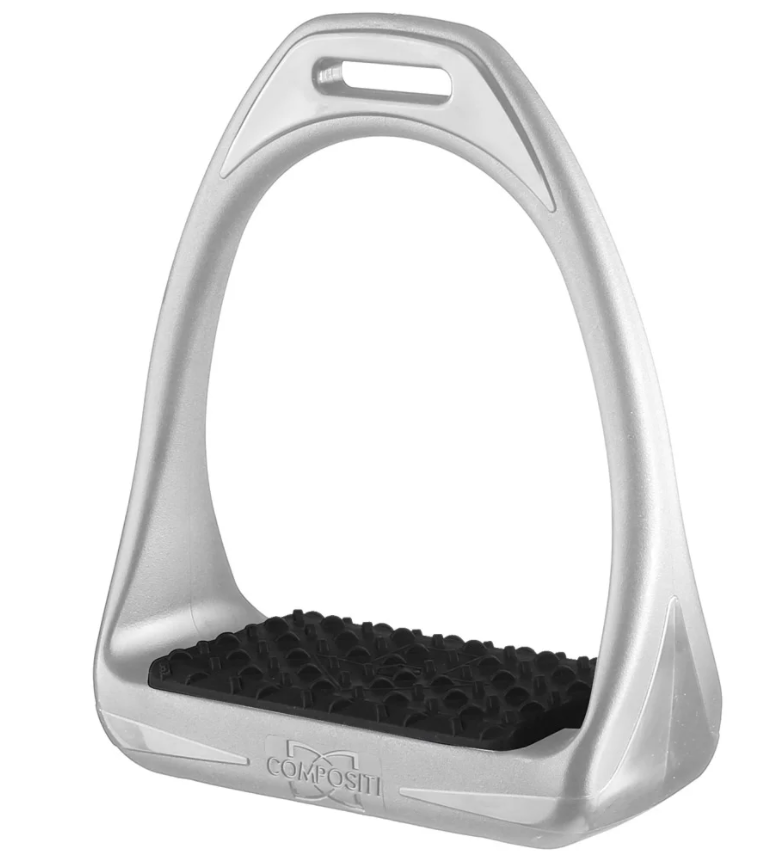
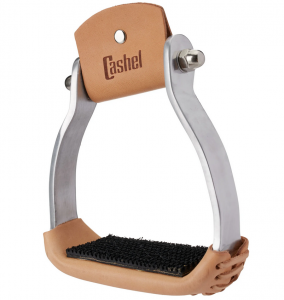
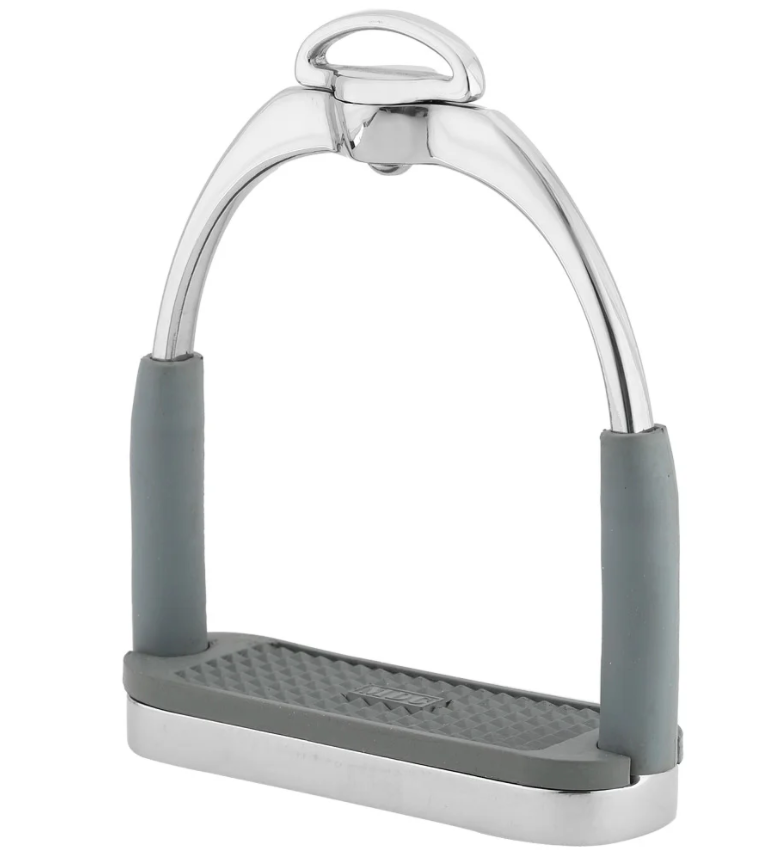
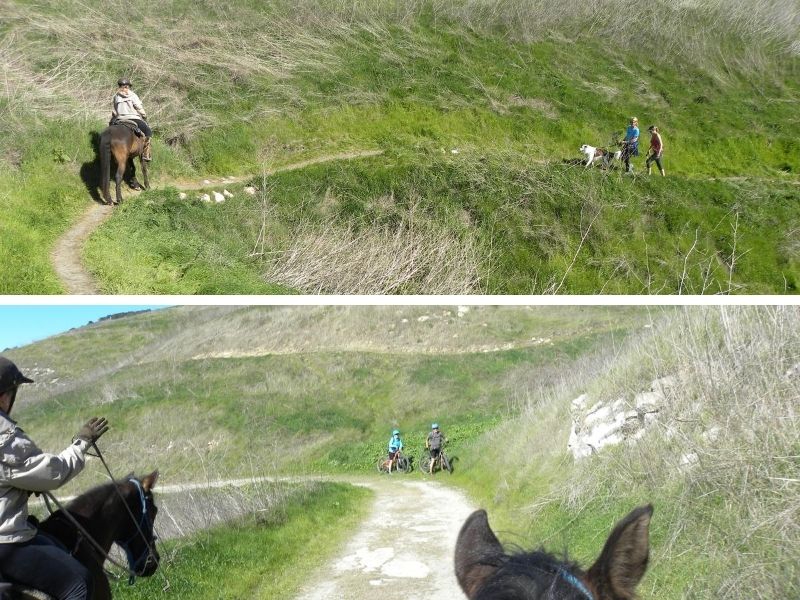
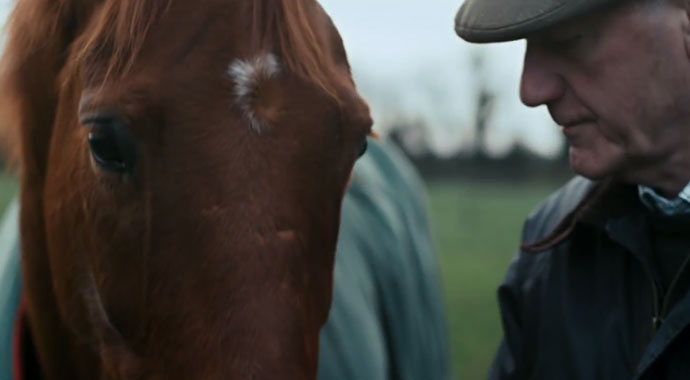
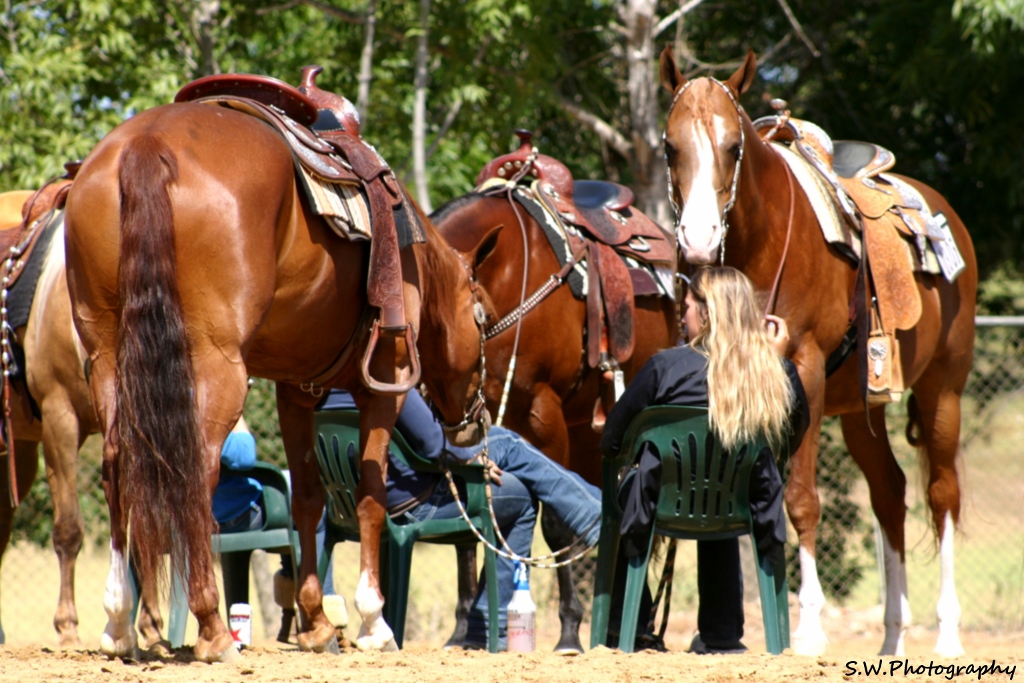
Thank you for continuing keeping life and horses real!
Thanks for appreciating my efforts!
Another great and timely article. As I continue to heal from my MCL tear and tibia fracture, I will get both the knee ice pack and leg brace for the barn. Such great suggestions. Thank you, Sharon